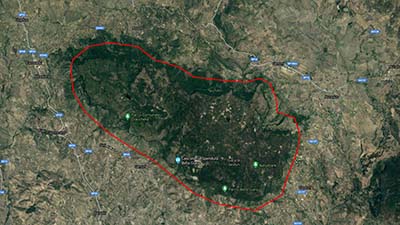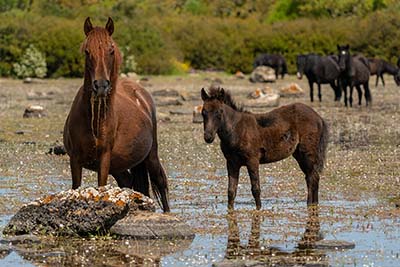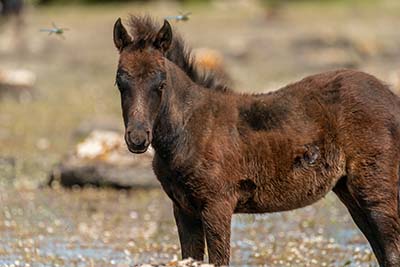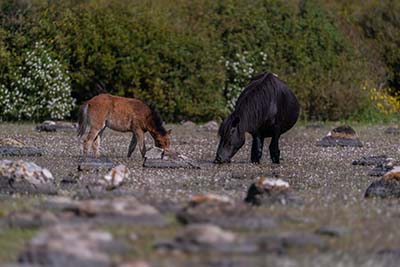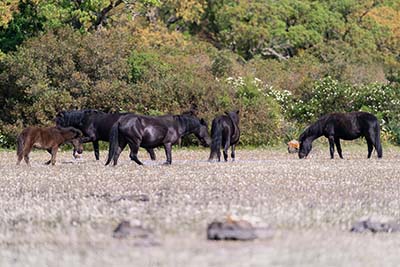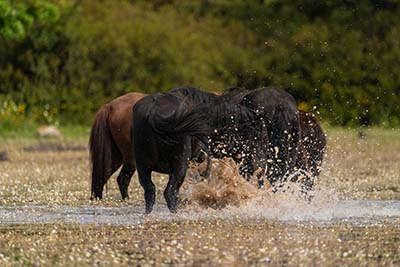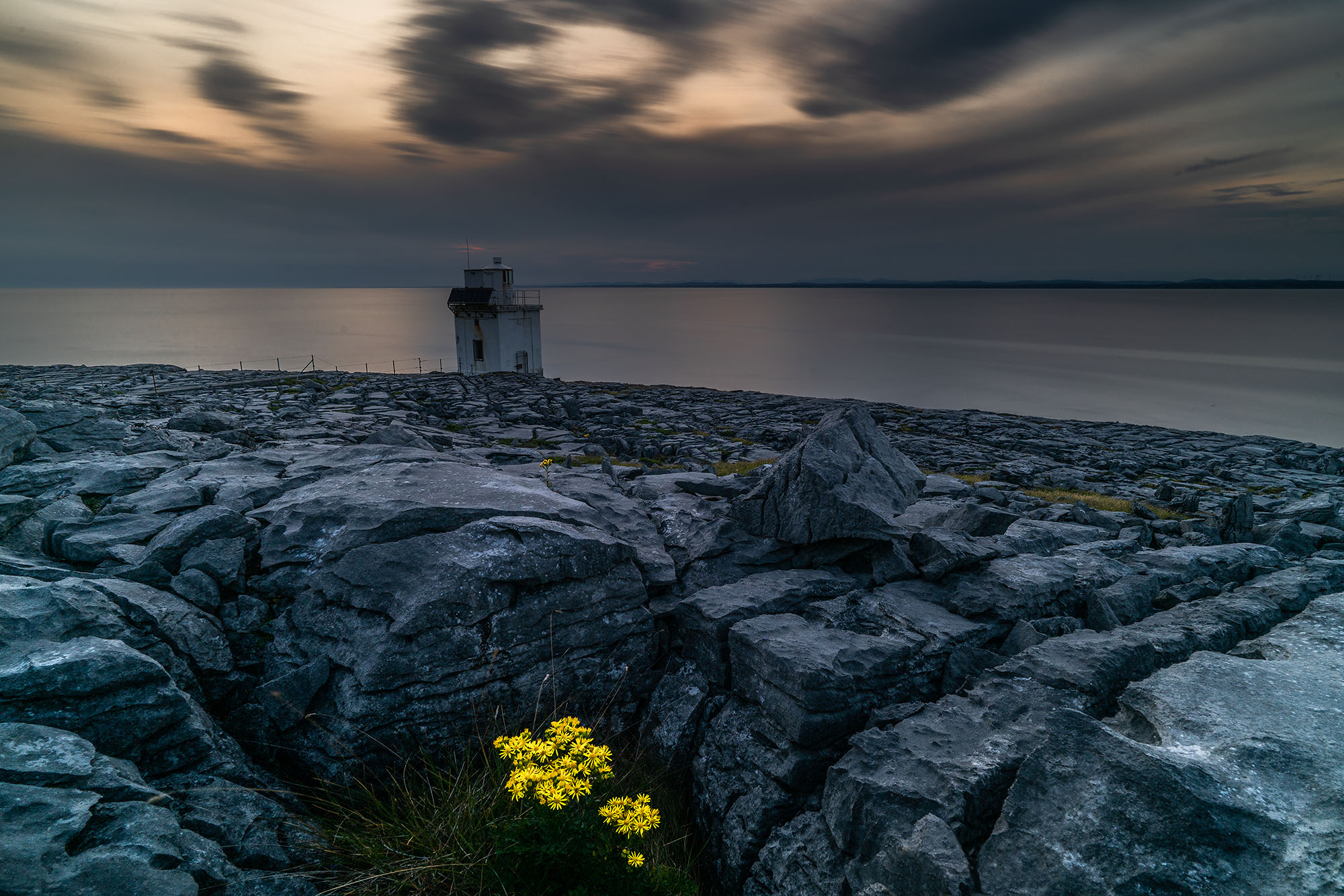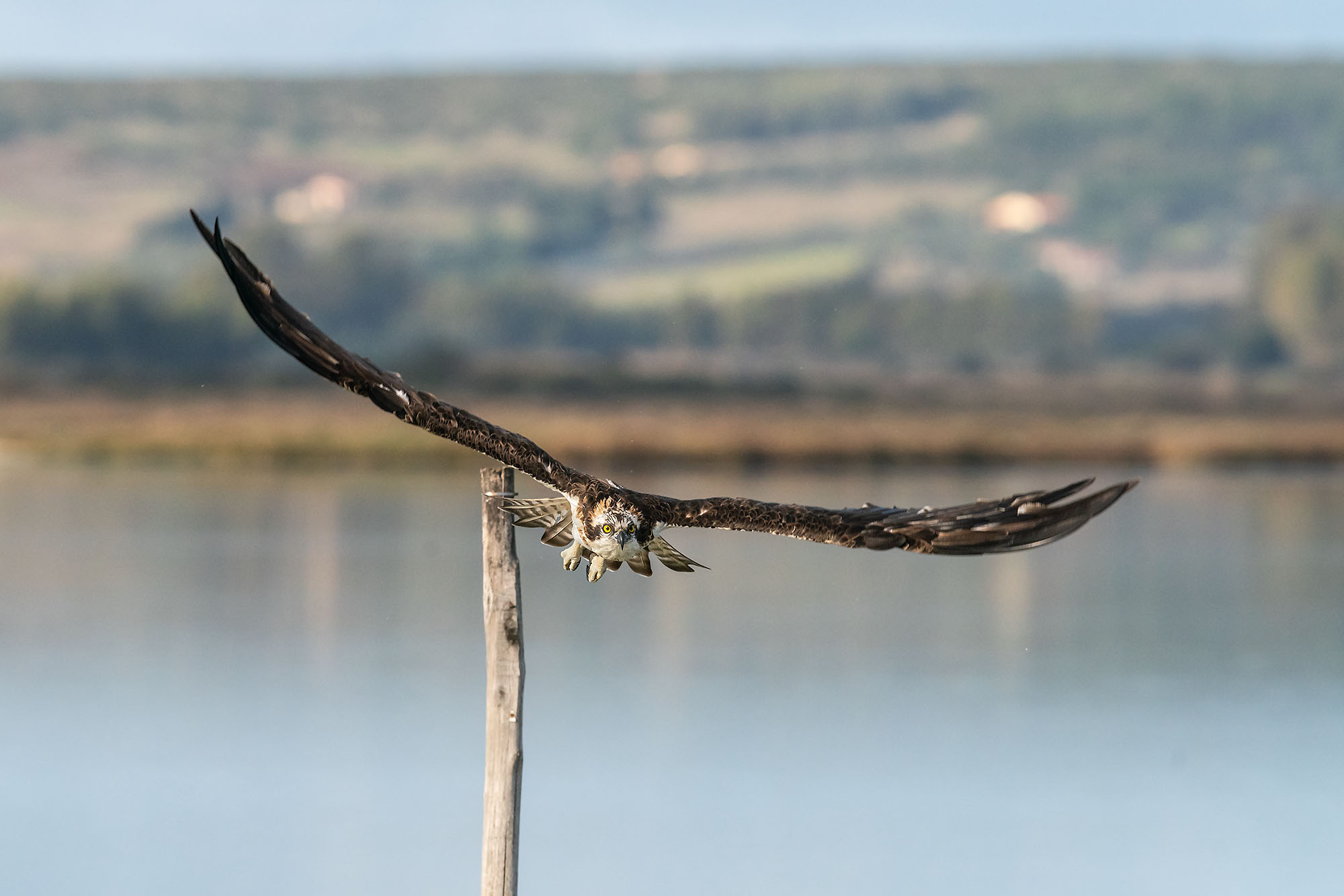Giara of Gesturi, the horses' land
Introduction
The Giara of Gesturi is an incredible place, a place without time, a place where you can think to live in another world, with nature still intact, high voltage pylon a part!! That place hosts the last wild horses in Europe, or at least the Internet said that, and I want to verify if it's true. But, let's crack on!!
The Giara
The Giara is a large plateau near the Gesturi village, in the middle of Sardinia, in an area called "Medio campidano". The environment of the area is quite green, I mean that there are several woods, made by the typical trees of that area, the cork oak, even though there are other kinds of plants, like Mediterranean scrub and grassland. During the summer the plateau is really hot, and everywhere is dry, trees apart, so for the horses is quite challenging to survive, but they have been living there for ages, so I think they have found a way to live. Instead during the winter and spring, the best period, in my opinion, there's a lot of water. In fact, they born many small lakes, or ponds as you prefer, where the horses stay during the daytime for eating and refresh themselves.
The area is really big, it's about 4400 hectares, so it means about 45 square kilometres, and it's about 550 meters on sea level. The plateau can be visited only by foot or by bike (if you haven't got one, you can rent a bike from a man that lives in the area), so during the hot days, you'll need to carry on enough water for the whole hike, because, as far as I know, there aren't sources of potable water. In theory, there should be a bar but was closed, so it had better not to think of it.
The Giara has formed about 2 million years ago: at the end of the Miocene, due to tectonic movements and the closure of the Mediterranean Sea, the sea retreated and in the following period, the Pliocene, the craters of Zepparedda and Zeppara Manna emerged, still clearly visible, that two eruptions of lava flows, which occurred in the two different phases at a distance of 700 years from each other, covered the existing valley forming a large basaltic plain. This would not explain why the plateau is currently in an elevated position with respect to the surrounding hills: in reality, it was not the plateau that rose but the neighbouring territory that was eroded by atmospheric agents and waterways. The plateau was preserved from erosion as basalt is a very resistant rock. The phenomenon just described is called the inversion of the relief.
The most spectacular environments of the Giara are certainly the Paulis: temporary and shallow marshes where rainwater stagnates. They are found in correspondence with depressions of the lava flow: the rock flaking gave rise to an impermeable clayey layer that retains the water until the summer season. There are about thirty of various sizes with a depth ranging from 30 to. Unique habitats of their kind, covered in spring by aquatic buttercups, the Paulis are home to numerous living species including the Sardinian tree frog and the green toad, as well as two small crustaceans considered real living fossils: the Lepidurus apus and the Triops cancriformis that have kept their genetic background unchanged for 5 million years [citation needed]; the eggs of these arthropods, laid in summer, hatch with the first spring rains.
The geographical position of the Giara, its conformation of impermeable nature and the mistral winds give life to a unique vegetation of its kind. Its surface is covered for 46% by woods, 32% by Mediterranean scrub, 9% by garrigue, 10% by grasslands and the remaining 3% by paulis.
The characteristic wood is the cork oak while the wood formations of oak or holm oak are less frequent.
The Mediterranean scrub is characterized by shrubs such as cistus (Cistus monspeliensis), in Sardinian muldegu: it was used to cover the pinnetas, but the ancients used its leaves to apply them on painful muscles and joints; the mastic (Pistacia lentiscus), in Sardinian modditzi, from whose berries an oil used to power the lamps was extracted; its resistant and flexible branches were also used for making baskets; the strawberry tree (Arbutus unedo) whose sweet red berries have strong laxative properties and from whose flowers an appreciated bitter honey is obtained; myrtle (Myrtus communis), in Sardinian fine, from which the well-known liqueur is obtained, is also used in the kitchen to flavor roasts; the wild pear (Pyrus amygdaliformis), in Sardinian pirastu; the blackthorn (Prunus spinosa), in Sardinian pruniscedda; helichrysum (Helichrysum italicum), known as scova de Santa Maria, is a strongly aromatic plant with emollient properties: legend has it that Mary placed the clothes of Jesus to dry on this plant with sun-yellow flowers, and from this it would be born the intense scent vaguely reminiscent of licorice.
The garrigue is mainly composed of wild mint (Mentha pulegium), used to keep insects away from humans and rubbed on dogs to keep fleas away, from euphorbia (Euphorbia dendroides) and the rarer (Euphorbia cupanii), in Sardinian lua , a plant used in ancient times for poaching, from whose leaves a white latex comes out which, when thrown into rivers, stuns the fish, allowing them to be caught.
The most frequent grasslands are those of asphodel (Asphodelus microcarpus), in Sardinian cadilloni.
Horses
Of course, the stars are them, the horses. So far, there are about 500 horses on the plateau, and the number is stable throughout the years. They live with others animals, like cows and sheep. But there are other wild animals, like foxes, buzzards, kestrels, jays, coots, martens, wild cats and some kinds of reptiles.
In past centuries the horses lived in the wild but during the threshing period, they were captured and used in agricultural work. The small size of the pony led the owners to cross them with other breeds to increase their size; this prompted the region of Sardinia in the seventies of the twentieth century to start a selective recovery program to restore its primitive characteristics. The ownership of the herds is now divided between municipalities, the region and finally private individuals who own only a small part of them.
Currently, about 500 achettas live on the plateau and this number remains constant without affecting the balance with the territory and with the farm animals (cattle, goats, sheep and pigs) with which they have lived for some time.
The characteristics of the Giara horse are almond-shaped eyes, long mane, short stature that varies at the withers starting from 120 cm and weight that varies between 150 and 200 kg. In many specimens, there is also a particular tuft that descends along the forehead almost to hide the eyes. The animal has adapted to the environment by developing small and particular hooves, perfect for stony ground. They live in the wild, with an average life expectancy between 15 and 20 years compared to 40 for a normal horse. The coats present are the bay, the morello and the sorrel, respectively in percentages of 65%, 30% and 5%. The bay has a reddish coat, black mane and tail; the black is completely dark; the chestnut has a red coat and a blond mane and tail. In Sardinian, they are called cuaddedus or achettas. They live in herds of 4-6-8 females and 1 stallion. The females give birth in spring, after a gestation that lasts 11 months, and one week after the birth they can be fertilized again. The foals, when they reach the fertile age around 3 years, are chased away from the herd by the stallion; it is therefore not uncommon to see small groups of 4/5 stallions looking for their own harem. Each group occupies an area of about 50/80 hectares.
Their behaviours are typical of wild horses, where the stallions try to have a harem and sometimes battle with the other for the females. Seeing them in nature has no price. The best places to see them are the small ponds, rich in vegetations that they eat and fresh themselves. The ponds are surrounded by a lot of bushes, where hide, even though if you stay quiet, they don't get in trouble. In fact, on some occasion some horse came really near to me, I think about 10 meters or less, so really exciting, mostly if they were stallions!!!.
During the photography session, I've taken a lot of pictures, but these are the most remarkable, in my opinion:
The foal were really cute and nice, and the adult, mostly the stallions, were massive and impressive, quite nervous sometimes, but never dangerous. On some occasions two horses have been interested by my presence, but only for a few minutes, seeing that I wasn't a danger for them. In fact, I stayed all the time in the same place, sat down on a rock watching them without moving, so they started to ignore me.
Ancient stuff
In the area, there also is a nuraghe, or at least the remains of it. Unfortunately, there are only a circle and a group of stones, but I think it was a big and beautiful nuraghe in past. For sure the stones have been used to make the typical long wall to delimit an area, losing so the beauty of the nuraghe. But all the area included the villages around, are full of ancient stuff, like the most famous nuraghe in Sardinia, I mean "su nuraxi" in Barumini village. That place is a concentrate of history, with a big and wonderful village around the main nuraghe, a superb view of how capable the ancient Sardinian inhabitants were.
The environment
If you are also interested in landscape photography, I think the best period is the winter and the spring. During the winter it could snow, making the plateau magic, or during the rainy days, you can photograph some waterfall, like the "sa spendula della Giara", a small waterfall active only with rains. If you want you can ask a guide the Giara Park, that will show the best place in the area.
Conclusion
My staying there has been exciting and rewarding. I've never seen the Giara's horses, and I think everybody should see them once in a life. I hope to get back there really soon, maybe in winter with the snow, if I can.
Cheers.
Bibliography
What do you think?
Send us feedback!


